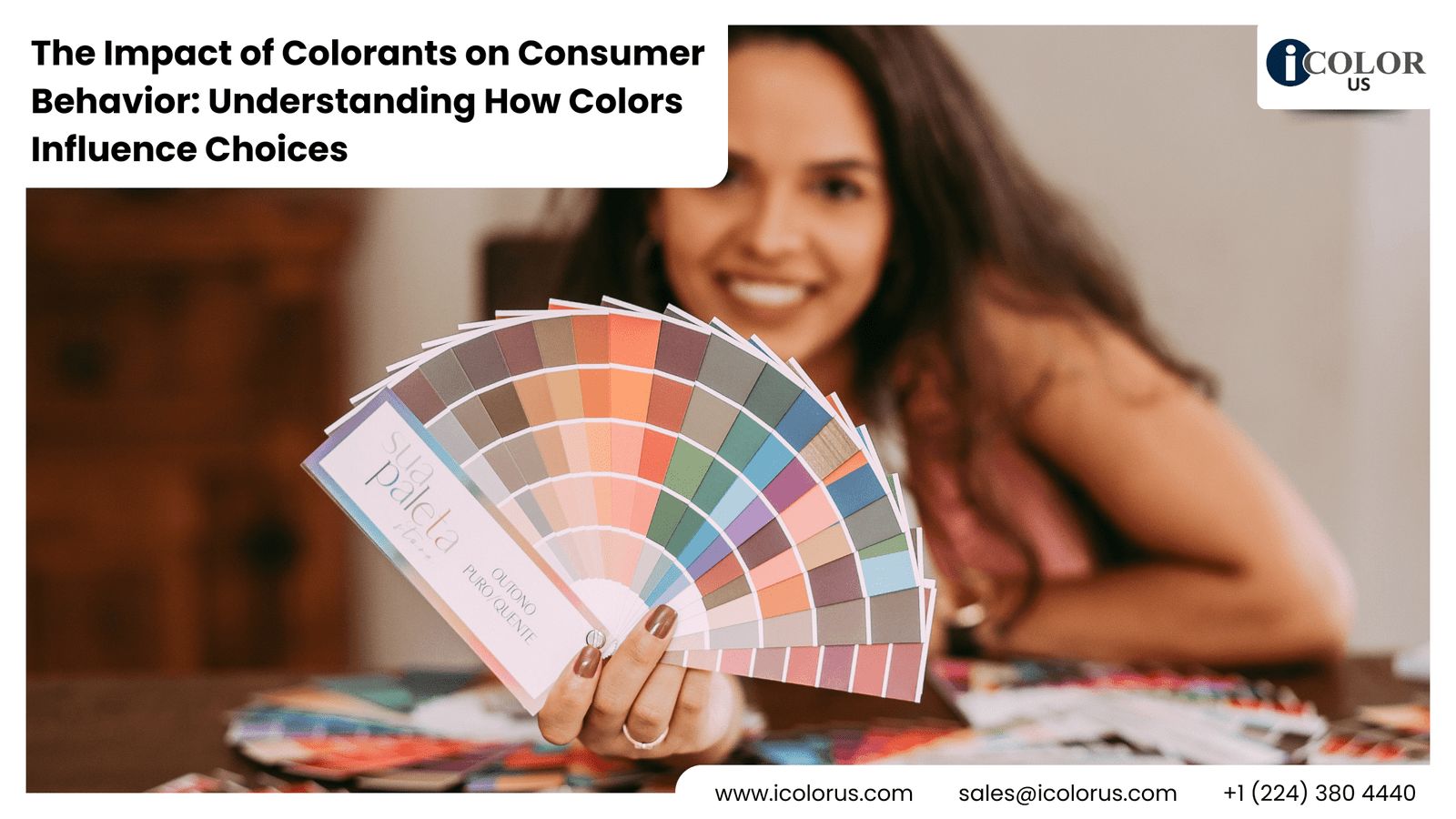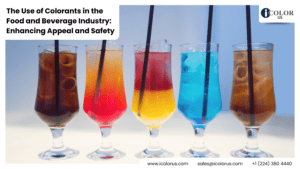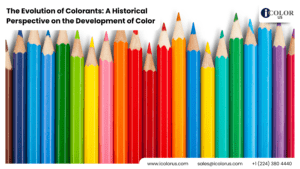Impact of Colorants on Consumer Behavior – Introduction
Ever wondered why you’re drawn to that vibrant red dress or that bright blue sports drink? Colors have a profound impact on our decisions, often without us even realizing it. From the food we eat to the clothes we wear, colorants play a crucial role in shaping our preferences and behaviors. Let’s dive into the colorful world of consumer behavior and discover how colorants influence our choices.
The Psychology of Color
Colors are powerful. They can evoke emotions, influence perceptions, and even trigger memories. For instance, blue is often associated with calmness and trust, while red can evoke excitement and urgency. This psychological impact of color is leveraged by marketers to sway consumer behavior. But did you know that color perceptions can vary across cultures? In some cultures, white is associated with purity and weddings, while in others, it’s linked to mourning and funerals. Understanding these cultural nuances is key for brands aiming for global appeal.
Colorants in Food and Beverages
Have you ever noticed that brightly colored foods seem more appetizing? That’s no coincidence. Colorants in food and beverages are used to enhance visual appeal, making products more attractive to consumers. For example, the bright yellow of a lemon-flavored drink or the deep red of a strawberry yogurt can significantly boost sales. Studies show that consumers often associate specific colors with particular flavors and freshness, influencing their purchasing decisions.
Colorants in Fashion and Apparel
Fashion is all about color. The hues of our clothes can express our personalities, moods, and even social status. Seasonal color trends, driven by industry giants, dictate what’s in vogue and what’s not. For instance, pastel colors may dominate spring collections, while earthy tones might be popular in autumn. The strategic use of colorants in fabrics not only enhances the aesthetic appeal but also impacts consumer choices and sales.
Colorants in Cosmetics
In the world of beauty, color is everything. From lipsticks to eyeshadows, the right shade can make all the difference. Cosmetic brands invest heavily in colorants to create a wide range of products that cater to diverse skin tones and preferences. By using unique colors and innovative packaging, brands can differentiate themselves in a crowded market. Think of iconic products like the classic red lipstick – it’s not just a color; it’s a statement.
Colorants in Home Decor
Our homes are our sanctuaries, and the colors we choose for our interiors can significantly affect our mood and well-being. Warm colors like red and orange can create a cozy atmosphere, while cool colors like blue and green can evoke a sense of calm and relaxation. Interior designers use colorants to create harmonious color schemes that reflect personal style and enhance the overall living experience.
Colorants in Advertising
Advertisers are masters of color psychology. They use color strategically to grab attention, convey messages, and influence consumer behavior. For example, the color red is often used in clearance sales to create a sense of urgency, while green is used to promote eco-friendly products. Successful marketing campaigns like Coca-Cola’s red branding or McDonald’s golden arches demonstrate the power of color in building brand identity and driving sales.
The Science Behind Colorants
Colorants are substances that impart color to other materials. They can be natural, derived from plants and minerals, or synthetic, created through chemical processes. While natural colorants are often perceived as safer and more eco-friendly, synthetic colorants are popular for their vibrancy and consistency. Understanding the science behind colorants helps consumers make informed choices and allows brands to innovate and improve their products.
Health and Safety Concerns
While colorants enhance the appeal of products, they can also pose health risks if not used properly. Some synthetic colorants have been linked to allergies and other health issues, leading to strict regulations and standards in many countries. Consumers are increasingly demanding transparency and safety, prompting brands to opt for natural and certified-safe colorants. Ensuring product safety not only protects consumers but also builds trust and brand loyalty.
Colorants and Branding
Colors are a fundamental aspect of brand identity. Iconic brands like Starbucks, with its green logo, or Apple, with its sleek, minimalist design, use color to create a strong, recognizable image. The choice of color can convey a brand’s values and personality, making it an integral part of marketing strategy. By understanding the impact of color on consumer behavior, brands can create a compelling visual identity that resonates with their target audience.
Consumer Behavior Theories
Several theories explain why consumers are drawn to certain colors. The “color-in-context” theory suggests that the meaning of colors can change depending on the context, while the “associative learning” theory posits that consumers develop preferences based on past experiences with specific colors. These theories help marketers predict how consumers will respond to different color schemes and tailor their strategies accordingly.
Technological Advances in Colorants
Innovation in colorant technology is continually evolving. From eco-friendly dyes to advanced pigmentation techniques, the industry is witnessing significant advancements. These innovations not only enhance the quality and safety of colorants but also open up new possibilities for creative and sustainable product design. Staying updated with these trends is essential for brands looking to maintain a competitive edge.
Environmental Impact of Colorants
The production of colorants can have a significant environmental footprint, from resource extraction to waste generation. However, the rise of sustainable practices and green chemistry is transforming the industry. Brands are increasingly adopting eco-friendly colorants and production methods to minimize their environmental impact. This shift towards sustainability is not only beneficial for the planet but also aligns with consumer preferences for environmentally responsible products.
Case Studies
Real-world examples illustrate the impact of colorants on consumer behavior. Consider the success of M&M’s, which offers a rainbow of colors that appeal to different tastes and preferences. Or look at the failure of a brand that ignored cultural color sensitivities, resulting in poor market performance. These case studies provide valuable insights into the strategic use of colorants in various industries.
Conclusion
Colorants play a pivotal role in influencing consumer behavior across different sectors. From food and fashion to cosmetics and home decor, the strategic use of color can enhance appeal, convey messages, and drive sales. Understanding the psychological and cultural aspects of color, coupled with advancements in colorant technology, allows brands to create products that resonate with consumers and stand out in the market.
FAQs
1. How do colorants affect taste perception in food? Color can significantly influence our perception of taste and quality. Bright, vibrant colors often indicate freshness and flavor, making food more appealing.
2. Are natural colorants better for health than synthetic ones? Natural colorants are generally perceived as safer, but not all synthetic colorants are harmful. It’s important to look for certified-safe products regardless of the colorant type.
3. Can color choices really boost sales in fashion? Absolutely. Color trends and preferences play a major role in fashion sales. The right color can make a product more attractive and desirable to consumers.
4. What are the most popular colors in marketing? Colors like red, blue, green, and yellow are commonly used in marketing due to their strong psychological impact and cultural significance.
5. How can companies ensure their colorants are safe for consumers? Companies can ensure safety by adhering to regulatory standards, conducting thorough testing, and opting for certified-safe colorants.





